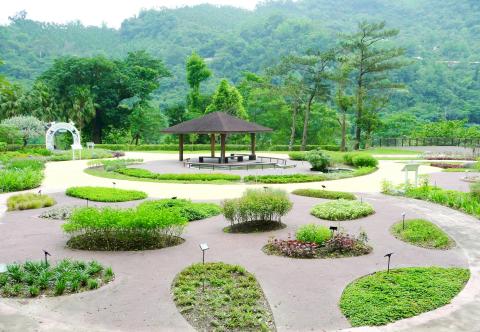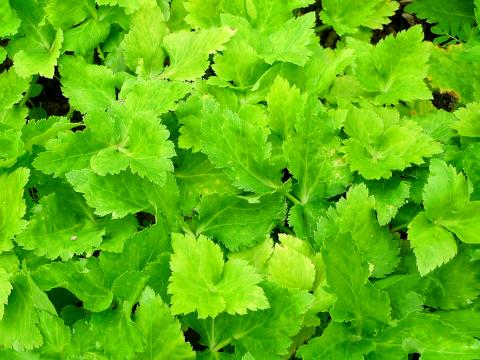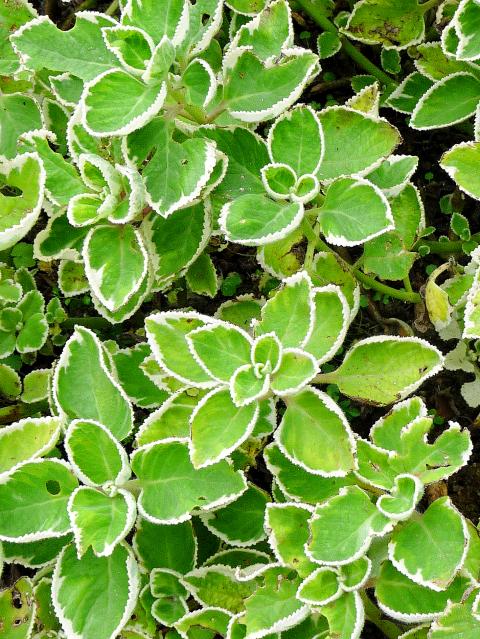For thousands of years, in Taiwan as in many parts of the world, herbs have been used to flavor food and to treat various ailments.
Locally, the overlap between cuisine and medicine is considerable. As Cathy Erway, author of The Food of Taiwan, recently told me by e-mail: “Plenty of everyday foods and drinks are known to have medicinal qualities, like grass jelly (仙草, Platostoma palustre, Chinese mesona or xiancao). It’s made from a herb that has cooling and refreshing qualities, but not much taste. Then there are much more assertive flavors consumed for their health benefits, like bitter melon juice (苦瓜汁). Both are so common it’s hard to tell if people eat or drink them for the medicinal effects, or purely because they like them. But there’s definitely an ingrained sense of food as medicine among eaters in Taiwan, more so than in the West.”
Over the past half century, Taiwan’s lowlanders have lost much of the traditional ecological knowledge that helped their ancestors survive. Among indigenous elders, however, there’s still a wealth of know-how which researchers are endeavoring to preserve.

Photo: Steven Crook
A survey, conducted a decade ago among eight extended families in a Bunun (布農族) community in Nantou County, identified 264 useful plant species. Over half had more than one function: 142 were food plants, while 65 could be used to make tools. Some 37 had medicinal applications, while 10 were suitable for making clothes or footwear.
A good place to see versatile plants is the Hundred Herbs Garden (百草園) inside Jhihben National Forest Recreation Area (知本森林遊樂區), about 18km southwest of Taitung City. The garden covers around 1,000 square meters and displays more than 50 herb species.
Some interesting information about the garden’s plants — among them the grass jelly mentioned by Erway — is presented on-site in English, but for the majority of species, there’s nothing beyond the scientific name. In this article, I aim to fill a few of the gaps, so international travelers can get a bit more out of their visit.

Photo: Steven Crook
National Taiwan University’s “Plants of Taiwan” Web pages lists Eupatorium formosanum (台灣澤蘭) as endemic to Taiwan, and according to other sources, this perennial herb also grows in Japan’s Ryukyu Islands. It’s been used to treat cholera, hemorrhoids, inflammation, neuralgia, prenatal edema, rheumatism and other conditions.
Eupatorium formosanum was first described in 1908 by Bunzo Hayata (1874-1934), a Japanese botanist who made a huge contribution to the study of Taiwan’s flora. Between 1900 and 1921, he named around 1,600 new taxa of vascular plants from the island. Among them is Taiwania cryptomerioides (台灣杉), one of the largest tree species in Asia.
Curiously, according to a 2009 paper outlining Hayata’s life and work, the Japanese scientist, “did not accept Darwin’s concept of evolution, the survival of the fittest, but instead believed in the eternal life of species based on the diversity of plants in the tropics that he observed during his work in Taiwan and Indochina.”

Photo: Steven Crook
Aspidistra elatior var. Attenuata (台灣蜘蛛抱蛋) is an endemic variation of a plant also found in Japan and China. The latter is known to gardening enthusiasts in the English-speaking world as the “Cast Iron Plant,” because it thrives even when neglected.
For a long time, it was believed that this plant was pollinated by slugs — rather than by flying insects, like the vast majority of plants. However, a few years ago scientists in Japan discovered that its flowers are pollinated by fungus gnats. It’s thought the flowers’ appearance and odor fool the gnats into thinking they’re mushrooms.
If you rub your fingers on the leaves of Cryptotaenia japonica (鴨兒芹), you’ll likely recognize the smell, and understand why the species is also called East Asian wild parsley. Like the garden parsley (Petroselinum crispum) that’s native to countries around the Mediterranean, it’s a member of the Apiaceae family, and thus related to celery and carrot. The leaves of Cryptotaenia japonica are used as a garnish, while the roots and stems are often eaten as a vegetable.

Photo: Steven Crook
A succulent plant native to Madagascar, Bryophyllum pinnatum (落地生根) is now considered a naturalized species in Taiwan. According to The Catalog of Medicinal Plant Resources in Taiwan (臺灣藥用植物資源名錄), published in 2003 by the Department of Health (predecessor to Taiwan’s Ministry of Health and Welfare), various parts of the plant can relieve sore throats and excessive phlegm, and help in cases of gastrointestinal bleeding. It’s also said to have some effect against hypertension. Overconsumption could be dangerous, however; the plant contains toxic compounds that appear to have induced fatal heart problems in grazing animals.
Plectranthus amboinicus (左手香, sometimes called Mexican mint) gets its Chinese name because those who handle its white-fringed leaves will afterward find a pleasant oregano-like scent on their hands. A traditional treatment for colds, fevers and throat irritations is to take some of the leaves, wash them, apply some salt and then either chew them, or crush them into a juice which is drunk. Local herbalists have also used this plant to treat heat-stroke, vomiting, chest pains and abdominal pain. In the Taiwan of yore, the leaves were also used to keep freshly-laundered clothes smelling good, and to scent a woman’s hair.
The Chinese name for Graptopetalum paraguayense means “stone lotus” (石蓮花), and the leaves do indeed look as if they’re carved from marble. English speakers sometimes call this succulent perennial “Ghost Plant” on account of its color, and a small number of people eat the leaves as a vegetable. Stripping off the thick gray skin reveals greenish flesh which quickly breaks down when cooked with chicken in a soup.
Traditional folk medicine claims this plant is useful for treating cirrhosis and other liver problems, high blood pressure and gout. There could be some truth in this: Earlier this year, Taiwanese scientists published a study suggesting that extracts of Graptopetalum paraguayense can prevent liver inflammation and fibrosis in rats.
Also represented in the garden is Chinese wormwood, aka fragrant silver weed (Crossostephium chinense, 蘄艾). It has small yellow flowers in summertime, and preparations made from its roots and leaves are said to be good at combating phlegm, relieving flatulence or increasing menstrual flow. Even if you’re highly skeptical about such claims, you’ll agree: What’s not to enjoy about this patch of unusual biodiversity?
Steven Crook has been writing about travel, culture, and business in Taiwan since 1996. He is the co-author of A Culinary History of Taipei: Beyond Pork and Ponlai, and author of Taiwan: The Bradt Travel Guide, the third edition of which has just been published.

In the March 9 edition of the Taipei Times a piece by Ninon Godefroy ran with the headine “The quiet, gentle rhythm of Taiwan.” It started with the line “Taiwan is a small, humble place. There is no Eiffel Tower, no pyramids — no singular attraction that draws the world’s attention.” I laughed out loud at that. This was out of no disrespect for the author or the piece, which made some interesting analogies and good points about how both Din Tai Fung’s and Taiwan Semiconductor Manufacturing Co’s (TSMC, 台積電) meticulous attention to detail and quality are not quite up to

April 21 to April 27 Hsieh Er’s (謝娥) political fortunes were rising fast after she got out of jail and joined the Chinese Nationalist Party (KMT) in December 1945. Not only did she hold key positions in various committees, she was elected the only woman on the Taipei City Council and headed to Nanjing in 1946 as the sole Taiwanese female representative to the National Constituent Assembly. With the support of first lady Soong May-ling (宋美齡), she started the Taipei Women’s Association and Taiwan Provincial Women’s Association, where she

Chinese Nationalist Party (KMT) Chairman Eric Chu (朱立倫) hatched a bold plan to charge forward and seize the initiative when he held a protest in front of the Taipei City Prosecutors’ Office. Though risky, because illegal, its success would help tackle at least six problems facing both himself and the KMT. What he did not see coming was Taipei Mayor Chiang Wan-an (將萬安) tripping him up out of the gate. In spite of Chu being the most consequential and successful KMT chairman since the early 2010s — arguably saving the party from financial ruin and restoring its electoral viability —

It is one of the more remarkable facts of Taiwan history that it was never occupied or claimed by any of the numerous kingdoms of southern China — Han or otherwise — that lay just across the water from it. None of their brilliant ministers ever discovered that Taiwan was a “core interest” of the state whose annexation was “inevitable.” As Paul Kua notes in an excellent monograph laying out how the Portuguese gave Taiwan the name “Formosa,” the first Europeans to express an interest in occupying Taiwan were the Spanish. Tonio Andrade in his seminal work, How Taiwan Became Chinese,